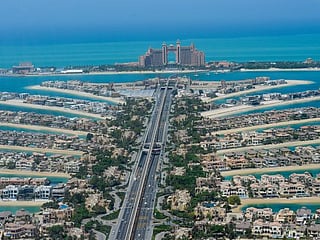What Q1 financial results of top four banks say about UAE’s banking sector
Lower provisions and cost savings point to resilient outlook

Also In This Package
Dubai: Most of the leading banks in the UAE have declared their first quarter 2021results pointing to improving operating conditions.
While year on year profit gains have been modest at best for most banks, they have made significant gains over the previous quarter and other preceding quarters.
Clearly, the Q1 numbers are pointing to improvement in the economic conditions leading to improved non-interest incomes, gains in cost savings and significant reduction in loan loss provisions supporting profitability.
Although the first quarter numbers indicate a small improvement in loan growth, interest incomes continued to be under stress due to the low interest rate environment, somewhat offset by savings from lower cost of funds.
Big four
First Abu Dhabi Bank (FAB), the UAE’s largest bank, reported a Q1 group net profit of Dh 2.5 billion, up 3 per cent year on year.
While the bank made significant gains from 36 per cent lower provisions year on year, operating expenses were reduced by 3 per cent as the group maintained strong cost discipline and gains. At the close of the quarter non-performing loans (NPL) ratio was at 4 per cent, provision coverage at 96 per cent.
“FAB's strong foundations and competitive strengths continue to support the bank's ability to achieve a resilient performance in a challenging quarter characterised by a slower than expected recovery in business activity,” said Hana Al Rostamani, Group Chief Executive Officer of FAB.
Clearly improving economic conditions and adequate provision buffers have been a common factor for all the four top banks.
Emirates NBD’s Q1 net profit improved 12 per cent year on year and 76 per cent quarter on quarter to Dh2.3 billion
Clearly, the bank’s lower impairment allowances reduced by 31 per cent following proactive provisioning in previous quarters. Additionally, operating expenses in the Q1 at Dh1.86 billion was down 9 per cent, largely driven by cost saving measures introduced in the aftermath of COVID crisis.
“Emirates NBD’s increase of Q1-21 reflects the resilience and gradual economic recovery following the global disruption in 2020,” said Hesham Abdulla Al Qassim, Vice-Chairman and Managing Director.
The bank also made gains in net interest margin (2.46%) with lower cost of funding from strong current and savings account (CASA) growth.
ADCB’s improved results reflected a host of factors, primarily the prudent provisioning the bank made last year following impairments linked to the NMC Healthcare Group and associate companies.
The bank made a clear turnaround a net profit of Dh1.12 billion for the first quarter of 2021, up 436 per cent year on year and 11 per cent sequentially (quarter on quarter).
“ADCB had a strong start to 2021. The institutional strength has underpinned the resilience of our consumer and wholesale banking businesses. Merger synergies, acceleration of digital transformation and additional cost initiatives have resulted in greater efficiency across our operations,’ said Ala’a Eraiqat, Group Chief Executive Officer.
While the most visible component of improved results was the 20 per cent decline in operating expenses year on year cost synergies from the merger too was a key supporting factor
Although the bank continued to take high impairment charges of Dh704 million in Q1 2021 it was down 63 per cent lower year on year.
Dubai Islamic Bank (DIB) too made significant gains in Q1 largely driven by lower impairment charges and cost savings.
Operating expenses declined to Dh612 million compared to Dh839 million in the same period of last year, an improvement of over 27 per cent. Impairment charges were lower at Dh751 million, reflecting the bank’s prudent approach to underwriting risks.
Cautious outlook
Overall, faced with the challenging economic environment, the top four banks experienced more than 75 per cent increase in provisions last year. Prudent advanced provisioning last year has seen a sharp decline in the first quarter of 2021. However, the extension of the Central Bank of UAE’s Targeted Economic Support Scheme (TESS) is likely to mask and or postpone the recognition of some of the problem loans that could be visible only early next year.
While slow loan growth and low interest rate environment is expected to keep interest margins under pressure, improving cost efficiencies are likely to have minimal material impact on overall profits as operating income growth is lower the rate of decline in operating expenses keeping the cost to income ratios elevated.
Sign up for the Daily Briefing
Get the latest news and updates straight to your inbox









